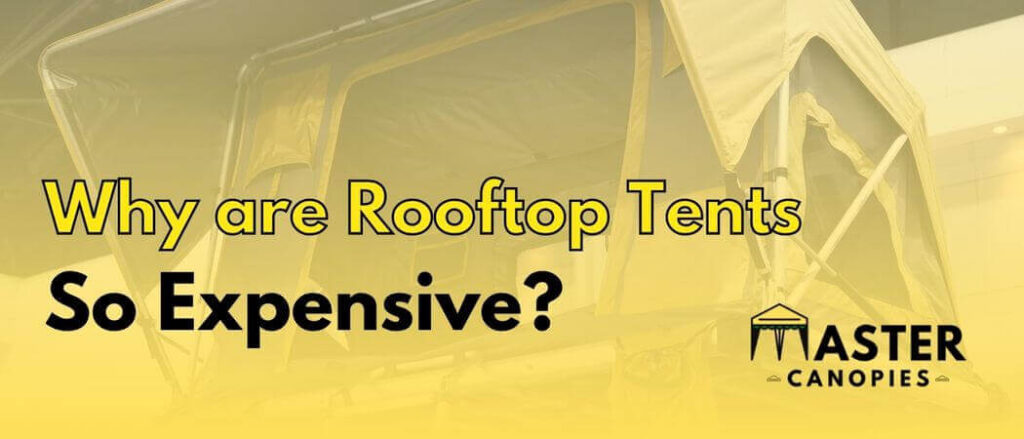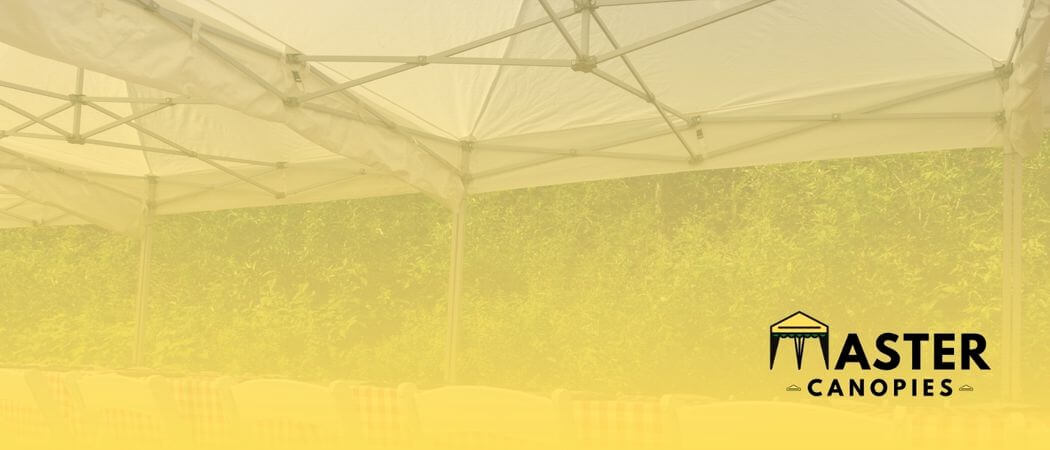
Can You Put a Tent in the Dryer Safely?
Can You Put a Tent in the Dryer Safely? Published February 4th, 2023 by Allen Campbell Well, it’s no secret that a tent is a
Published June 17th, 2022 by Allen Campbell

If you’ve looked online for rooftop tents, chances are you’ve seen prices that are out of your range. But, whether you’re a seasoned camper or new to the game, the expense of rooftop tents may surprise you.
Almost everyone believes that rooftop tents are an expensive investment. Yet, they also agree that they are the best thing ever.
Rooftop tents have gone viral on social media. Rooftop tents are popular even if conventional tents do not suit your lifestyle.
Today in this article, I’ll be discussing why rooftop tents are so expensive? I’ll discuss several reasons to justify their cost.

To begin, it is essential to remember that serious travelers and overlanders from all over the globe have referred to rooftop tents as indispensable. There is a rationale behind why recent posts about these portable dorms have been trending on social media, which has resulted in an exponential increase in the number of customers.
Even though the cost of rooftop tents might be out of range for some people, there have always been valid reasons why one should consider these tents to be investments rather than one-time expenditures. The material is the most significant contributor to the exorbitant cost of rooftop tents.
There are two different kinds of rooftop tents: soft shell and hard shell models. Tents with a soft shell have a foldable design, enabling them to be assembled more quickly and providing a more spacious area for movement after the tent has been stretched.
The adaptability of the canvas material also makes it possible to use the tent for a variety of purposes, particularly if the users situate the tent off to the side of the vehicle. But, again, the impression is comparable to that of an awning.
However, there is a good reason why softshell tents are more affordable than hard-shell tents. The assembly of softshells is a time-consuming process. It takes a lot of time to attach the tent’s stays and supports to the cover of the tent. You will also have to have some knowledge of how to set up the tent.
Tents with hard shells provide several benefits that soft shells cannot compete with. First, it has a wholly automated internal mechanism for assembling the parts. Internal struts that are hydraulically assisted in extension are included in some of the finest hard shell tents available for purchase.
The exteriors of hard shells are made of fiberglass and other synthetic materials. Unlatching four buckles is all that is required to get these tents up and running, after which they will put themselves up automatically. The assembly process typically takes around sixty seconds.
Tents with a hard shell are also more lightweight. They are responsible for decreasing the gas mileage of vehicles that transport them. Taller campers should not anticipate as much sleeping room from hard shells since they are not as flexible as softshells.
It should come as no surprise that the material used to construct a rooftop tent significantly affects the total cost. This explains why rooftop tents are so expensive. Following are some factors which make them more expensive.
Sadly, the expense of a rack provided by a third party will be one of the most immediate charges that prospective buyers of rooftop tents will experience. If you buy a rooftop tent, you will almost certainly need to buy a roof rack for your automobile so that the baseboard of your tent can fit on it.
The construction of rooftop tents requires a sturdy anchor to the roof rack, which is true regardless of whether the tent has a hard shell, which tends to sit directly on the roof of the car, or a soft shell, which often hangs from the side of the vehicle.
However, when contrasted to the uneven rocky ground that field tents often rest on, the stability that rooftop tents give will definitely be appreciated by the user. In most cases, you will not want to cut corners at the expense of purchasing a rack from a third party that will allow you to connect your tent to your car.
When thinking about the cost of a rooftop tent, another factor to take into consideration is how long it will last.
Although most hard-shell rooftop tents come with lifetime warranties covering any damage to the exterior shell, softshell types will often need repair at some point throughout the tent’s lifespan.
The softshell tent material is very long-lasting. Softshell tent seams are typically sewed three times, in contrast to the standard field tent seams, which are only sewn once. The lifespan of the rooftop tent is increased by making the seams stronger.
However, the intricate nature of the rooftop tents’ construction, their designs, and the addition of any extras will cause producers to raise prices to maintain their products’ longevity.
Okay, so you might argue that rooftop tents have a wider selection of tent materials, are more durable, and are more securely attached to the ground owing to the sturdy racks attached to your car.
On the other hand, the size and weight of my field tent are more manageable, it does not need any sophisticated racks, and it is handier for weekend camping outings. And the cost is lower. So why would I choose a rooftop tent?
In the past, conventional textile field tents were, in fact, easier to transport and carried less weight than rooftop tents. On the other hand, in recent years, technology has advanced to the point where many rooftop tents are handier than traditional camping tents.
Because softshell tents are so adaptable, campers may leave their sleeping bags and other belongings inside the tent while they are gone for the night. This allows campers to save the hassle of packing up their belongings first thing in the morning.
In addition, since the tent is permanently linked to the vehicle, the only thing that separates you from camping in it and moving about in it is the speed with which you can put it up and take it down.
Although it may take more time to disassemble a hard shell tent than a softshell tent, the hydraulic components included in many higher-end versions more than make up for the inconvenience caused by this difference.
When the day is finished, and everyone is ready to turn in, conventional tents demand a significant investment of effort. In contrast, setting up a rooftop tent won’t take even inexperienced campers more than a few minutes of their time, regardless of their level of expertise.
To begin, the majority of rooftop tents already include a mattress that is completely integrated into the structure. Therefore, there is no need to get worked up about your air mattress; collect the air compressor and all of the other equipment that is required to build a bed for the night. All you need is a regular mattress.
The African jungle and the Australian outback are where the rooftop tent first made its appearance, according to the New York Times. There’s no need to wonder why rooftop tents are so pricey, given that they provide such a high level of luxury; after all, their history is illustrious.
The height at which conventional tents and rooftop tents are pitched is the primary characteristic that differentiates the two types of tents. There was a time when sleeping on the chilly ground was an essential part of the camping experience; however, this is no longer desirable for campers who are on the go.
It is impossible to put a figure on the luxury of sleeping off the ground, surrounded by thick mattresses and tight vertical walls.
But why do rooftop tents cost so much money? First and foremost, due to the fact that they are pretty cozy and comfortable. Even if it comes at an additional expense, many of them include sky windows, down mattresses, and solid walls to increase their level of comfort.
On the other hand, who is to say that sleeping on the ground with other animals is more comfortable than sleeping on the roof of your car, where you are protected from the weather and where you have more space to move around?
Because the cost of many hard shell rooftop tents is coming closer to the cost of RVs than the cost of high-end field tents, there must be additional design factors that contribute to the high price of these products.
Strong baseboards lie beneath the fiberglass framework of many rooftop tents. These baseboards serve to link the roof rack of your car to the tent itself.
Your tent won’t be able to topple over if it has a baseboard since it’s on firm ground. The baseboard is what allows for people to sleep in a concentrated location and can accommodate a certain number of sleepers depending on the size of your rooftop tent and the number of people that can fit inside.
In contrast, a baseboard is not necessary for typical field tents. On the other hand, pleasant sleep is often disrupted by the uneven surface of the ground.
Your rooftop tent will provide you with a superior camping experience that traditional tents cannot match if you invest in a sturdy baseboard.
When you buy a field tent, you won’t often find any additional attachments that you can purchase separately and use in conjunction with the tent. It is not a piece of apparatus that was designed with your body in mind in particular.
Because of their higher price point, rooftop tents often come packaged with their own accessories. Tents that meet the user’s weight criteria are available for purchase. There are also modular extras that may be purchased, such as additional awnings, storage shelves, and rooms.
You may not realize how many different options there are for accessorizing rooftop tents. Customers who are ready to pay a little bit more than the standard price may add cargo bins, personalize the form of the tent, and pick shell materials that best suit their requirements.
Compared to traditional canvas field tents, most people see rooftop tents as a noticeable improvement. They provide campers with increased utility, elevate them off the ground, and are a fantastic solution that falls between tents and RVs as an alternative sleeping arrangement.
When compared to the price tag, some campers may discover that rooftop tents give a lower level of facilities than they had anticipated. In addition, rooftop camping offers a peaceful separation from the weather; yet, those campers who wish to maintain a strong connection with the land they are camping on may find that this kind of camping does not meet their needs.
Those who are experienced in Overlanding and are contemplating buying a rooftop tent should consider the cost. Rooftop tents are something experienced campers who are used to the more conventional roll-up tents should look into.
More prospective clients might be drawn in as manufacturers find ways to lower production costs and as rooftop camping becomes a more popular way of life.
Rooftop tents come at a high cost for reasons that are easy to understand. So why do rooftop tents cost so much money? The short answer is this.
Rooftop Tents are not only much more comfortable but also safer, more secure, more handy, portable, and superbly designed than traditional tents and require more complexities such as more sophisticated manufacturing processes, customer service, etc.
The finest piece of advice that can be given to prospective purchasers is to talk to their neighborhood dealer. Indeed, rooftop tents may cost you a pretty penny. However, for many people who are interested in Overlanding and buying, rooftop tents will bring value that will last a lifetime.

Allen is a full time writer at Mastercanopies.com and enjoys traveling around the United States and exploring nature. He enjoys writing about canopies as he believes they are extremely crucial in having a successful camping trip whether it be a trip to the beach, mountains, or the open plains.

Can You Put a Tent in the Dryer Safely? Published February 4th, 2023 by Allen Campbell Well, it’s no secret that a tent is a

How to Print on a Canopy: How to Print Custom Images/Logos Published February 4th, 2023 by Allen Campbell Do you want to print something special

How to Choose the Best Outdoor Event Flooring for your Next Celebration Published January 31st, 2023 by Allen Campbell Planning an outdoor event can be

How to Insulate a Tent for Winter and Keep Warm Published February 3rd, 2023 by Allen Campbell Is your tent the last frontier when it

Wolfwise Beach Tent Review: Should You Buy It? Published January 23rd, 2023 by Allen Campbell Are you planning a beach vacation but don’t know exactly

How to Start a Tent Rental Business (and have Success with It!) Published January 23rd, 2023 by Allen Campbell Do you have a knack for

Wolfwise Beach Tent Instructions: Easy Setup Guide Published January 23rd, 2023 by Allen Campbell Let’s face it, setting up a beach tent can be tricky…

Best 100×100 Tents for Large Gatherings and Parties Published January 12th, 2023 by Allen Campbell Finding the right tent for your next event can be

Best Tent Rentals in Downers Grove, IL Published January 12th, 2023 by Allen Campbell Hoping to make a big impact in Downers Grove? Well, if

Master Canopies is here to bring you the best canopies for the outdoors so that you can enjoy the fresh air without the gleaming and burning light of the sun.

Master Canopies is here to bring you the best canopies for the outdoors so that you can enjoy the fresh air without the gleaming and burning light of the sun. As an Amazon Associate, we earn from qualifying purchases.